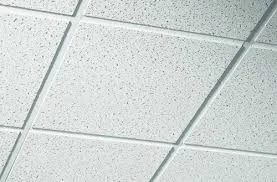Nov . 29, 2024 11:43 Back to list
Innovative FRP Ceiling Grids for Enhanced Aesthetic and Structural Performance
The Advantages of FRP Ceiling Grids in Modern Architecture
In the realm of modern architecture and interior design, material selection plays a pivotal role in both aesthetics and functionality. Among the innovative materials gaining popularity is Fiber Reinforced Polymer (FRP), particularly in the form of ceiling grids. This article delves into the advantages of using FRP ceiling grids, examining their applications, benefits, and impact on building design.
Understanding FRP
Fiber Reinforced Polymer is a composite material made of a polymer matrix reinforced with fibers, which can be glass, carbon, or aramid. The main appeal of FRP lies in its exceptional strength-to-weight ratio, corrosion resistance, and versatility. These properties make it an ideal choice for various construction applications, including the creation of durable and lightweight ceiling grids.
Lightweight and Strong
One of the most significant benefits of FRP ceiling grids is their lightweight nature combined with high strength. Traditional ceiling grid systems often utilize heavier materials such as steel or aluminum, which can add significant weight to the overall structure. In contrast, FRP grids facilitate easier handling and installation, reducing labor costs and construction time. The inherent strength of FRP ensures that these grids can support various types of ceiling materials and fixtures without the risk of sagging or failure.
Corrosion Resistance
In environments prone to moisture or chemical exposure, the corrosion resistance of FRP is a game-changer. Unlike metal grids that can deteriorate over time, FRP ceilings maintain their integrity and appearance even in challenging conditions. This property makes FRP especially suitable for kitchens, laboratories, and industrial facilities where hygiene and durability are paramount. The ability to withstand such environments not only extends the lifespan of the ceiling grid but also reduces long-term maintenance costs.
frp ceiling grid

Aesthetic Design Options
FRP ceiling grids are available in various styles, colors, and finishes, offering architects and designers the flexibility to create unique and visually appealing spaces. The material can be molded into different shapes and configurations, accommodating a wide range of design concepts. Whether crafting a sleek, modern look for corporate offices or a more textured, organic feel for commercial spaces, FRP provides endless possibilities to meet aesthetic demands.
Sustainability and Environmental Impact
As sustainable building practices continue to gain traction, the environmental impact of building materials becomes a crucial consideration. FRP can contribute to greener construction by being lightweight, thereby reducing energy consumption during transportation and installation. Additionally, many FRP products are recyclable and can be produced using less energy than traditional materials. By selecting FRP ceiling grids, builders can support sustainability initiatives while also benefiting from the material’s durability and performance.
Thermal and Acoustic Insulation
Beyond structural benefits, FRP ceiling grids can enhance the thermal and acoustic efficiency of a building. They can be designed to provide effective insulation, helping regulate indoor temperatures and reducing energy costs. Moreover, certain configurations allow for sound absorption, making FRP grids an excellent choice for spaces requiring noise control, such as offices and educational institutions.
Conclusion
The integration of FRP ceiling grids into modern architectural designs presents a multitude of advantages, from lightweight strength and corrosion resistance to aesthetic flexibility and environmental sustainability. As the demand for innovative building solutions grows, it is essential for architects, builders, and property owners to consider the benefits that FRP can offer. By embracing this advanced material, they can enhance not only the functionality but also the visual appeal of their spaces, paving the way for a new era in construction and design. As technology advances and more options emerge in the market, FRP ceiling grids stand out as a forward-thinking choice that aligns with the needs of contemporary architecture.
-
Quality Ceiling Trap Doors & Access Panels | Easy & Secure AccessNewsAug.30,2025
-
Durable Ceiling T Grid Systems | Easy InstallationNewsAug.29,2025
-
PVC Gypsum Ceiling: Durable, Laminated Tiles for Modern SpacesNewsAug.28,2025
-
Pvc Gypsum Ceiling Is DurableNewsAug.21,2025
-
Mineral Fiber Board Is DurableNewsAug.21,2025
-
Ceiling Tile Clip Reusable DesignNewsAug.21,2025







